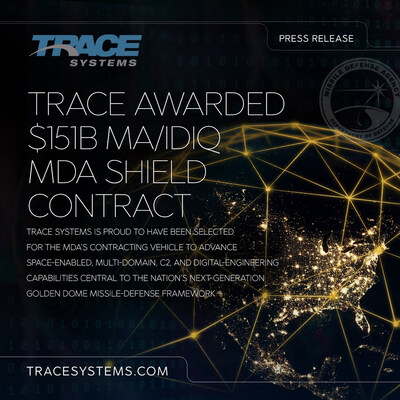Space Debris Removal Market worth $0.6 billion by 2028 – Exclusive Report by MarketsandMarkets™
CHICAGO, Nov. 24, 2023 /PRNewswire/ — The Space Debris Removal market is valued at USD 0.1 billion in 2023 and is projected to reach USD 0.6 billion by 2028, at a CAGR of 41.7% from 2023 to 2028 according to a new report by MarketsandMarkets™. The space debris removal market is a subset of the satellite and technology industry that focuses on the development and deployment of space debris removal solutions and services. Space debris removal refers to the strategic process of eliminating defunct satellites, spent rocket stages, and fragments from space orbit. This burgeoning industry aims to mitigate orbital congestion, safeguard operational satellites, and ensure sustainable space exploration. By deploying innovative technologies and retrieval strategies, companies engage in the retrieval, capture, and disposal of space debris, fostering a cleaner orbital environment for continued commercial satellite launches and enhancing the long-term viability of space activities.

Download PDF Brochure: https://www.marketsandmarkets.com/pdfdownloadNew.asp?id=179602300
Browse in-depth TOC on “Space Debris Removal Market”
150 – Tables
100 – Figures
300 – Pages
Space Debris Removal Market Report Scope:
Report Coverage | Details |
Market Revenue in 2023 | $ 0.1 billion |
Estimated Value by 2028 | $ 0.6 billion |
Growth Rate | Poised to grow at a CAGR of 41.7% |
Market Size Available for | 2023–2028 |
Forecast Period | 2023–2028 |
Forecast Units | Value (USD Million/Billion) |
Report Coverage | Revenue Forecast, Competitive Landscape, Growth Factors, and Trends |
Segments Covered | By Technique, Orbit, Debris Size, End User, Operation and Region |
Geographies Covered | North America, Europe, Asia Pacific, and Rest of World |
Key Market Challenge | Lack of debris data management a challenge for space industry |
Key Market Opportunities | Opportunity for robotic Service Providers in the space debris removal market |
Key Market Drivers | Growing government initiatives |
The space debris removal market encompasses a range of debris size, orbit, technique, operation, and end user that leverage these benefits.
Based on the technique, the direct debris removal segment is estimated to have the highest CAGR during the forecast period.
Based on the technique, the direct debris removal segment is estimated to lead the space debris removal market from 2023 to 2028. Direct debris removal involves the capture and active removal of orbital debris from space. The rise of direct debris removal techniques is due to the urgent need for clearing space clutter. The growing number of satellites and spacecraft in orbit increases the likelihood of collisions with debris, highlighting the need for effective removal strategies. Additionally, technological advancements in robotic arms, nets, and other capture mechanisms, as well as improvements in propulsion and rendezvous techniques, are making direct debris removal increasingly feasible.
Based on the orbit, LEO segment is estimated to have the highest CAGR during the forecast period.
The LEO segment in space debris removal market is projected to grow at highest CAGR. LEO orbit satellites provide stable, continuous coverage, making them vital for services such as broadband internet, telecommunication, and broadcasting. The demand for real-time data and global connectivity further underscores their significance. The growing debris density in this belt has triggered the need to clear the space junk in order to maintain the safety of operational satellites. Technological advancements and cost-effective deployment methods are also contributing to removing debris from this orbit.
Based on the operation, the multiple technique segment is estimated to have the highest CAGR during the forecast period.
The multiple technique segment in the space debris removal industry is primarily driven by the need to have combination of multiple techniques in order to remove debris of different sizes. Combining different techniques can lead to synergistic effects, enhancing the overall effectiveness and efficiency of debris removal missions. A single technique may not be effective for all types of debris, making a multiple-technique approach necessary to address the entire debris population. These factors collectively propel the growth of the multiple technique segment, addressing evolving business and mission requirements.
Based on the end user, commercial segment is estimated to have the highest CAGR during the forecast period.
The commercial end user segment in space debris removal is primarily driven by the critical need to protect satellite assets. Satellite operators, telecommunication companies, and Earth observation firms heavily rely on space infrastructure for their operations. With the rise in satellite constellations and increasing dependency on space-based services, safeguarding these assets against potential collisions with space debris is paramount. Mitigating the risk of damage or loss of satellites ensures uninterrupted services and protects substantial investments. Hence, commercial entities are actively seeking efficient space debris removal solutions to secure their space assets and maintain operational continuity.
Inquiry Before Buying: https://www.marketsandmarkets.com/Enquiry_Before_BuyingNew.asp?id=179602300
Based on regions, the North America market is estimated to have the highest CAGR during the forecast period.
North America is home to some of the biggest players in the space debris removal market, including Northrop Grumman, and Kall Morris Incorporated. These companies have a wealth of experience and expertise in space technology, and they are investing heavily in the development of space debris removal systems. The North American government is a major supporter of the space industry. The government has invested millions of dollars in research and development of this technology, and it is also providing funding for the deployment of orbital debris removal solutions.
Key Players
The space debris removal companies is dominated by a few globally established players such as Astroscale (Japan), ClearSpace (Switzerland), Surrey Satellite Technology Ltd (UK), Northrop Grumman (US), and Kall Morris Incorporated (US).
Get 10% Free Customization on this Report: https://www.marketsandmarkets.com/requestCustomizationNew.asp?id=179602300
Browse Adjacent Market: Aerospace and Defence Market Research Reports & Consulting
Related Reports:
In Space Manufacturing Market by Product Technology (Perovskite Photovoltaics cell,Graphene and solid-state Lithium batteries, Exchange membrane cells,Traction motor,Hydrogen propulsion system ,Insulin), End Use and Region – Global Forecast to 2040
Space Launch Services Market by Payload (Satellite, Human Spacecraft, Cargo, and Space Probes), Service Type, End User(Commercial, Military and Government), Orbit, Launch Vehicle, Launch type and Region – Global Forecast to 2027
Space Situational Awareness (SSA) Market Size, Share & Industry Growth Analysis Report by Solution (Services, Payload Systems, and Software), Orbital Range (Near-Earth and Deep Space), End Use (Commercial, and Government & Military), Object, Capability, and Geography- Global Growth Driver and Industry Forecast to 2026
Space Robotics Market by Solution, Services (Satellite Servicing, On-orbit Assembly & Manufacturing, De-orbiting Services, Re-supply, Surface Mobility, & Launch Support), Application, End-User, and region (2017-2023)
Small Satellite Market by Mass (Small Satellite, CubeSat), Application, Subsystems (Satellite Bus, Payload, Solar Panel, Satellite Antenna), Frequency, End-use (Commercial, Government & Defence, Dual-use), Orbit and Region – Global Forecast to 2028
About MarketsandMarkets™
MarketsandMarkets™ has been recognized as one of America’s best management consulting firms by Forbes, as per their recent report.
MarketsandMarkets™ is a blue ocean alternative in growth consulting and program management, leveraging a man-machine offering to drive supernormal growth for progressive organizations in the B2B space. We have the widest lens on emerging technologies, making us proficient in co-creating supernormal growth for clients.
Earlier this year, we made a formal transformation into one of America’s best management consulting firms as per a survey conducted by Forbes.
The B2B economy is witnessing the emergence of $25 trillion of new revenue streams that are substituting existing revenue streams in this decade alone. We work with clients on growth programs, helping them monetize this $25 trillion opportunity through our service lines – TAM Expansion, Go-to-Market (GTM) Strategy to Execution, Market Share Gain, Account Enablement, and Thought Leadership Marketing.
Built on the ‘GIVE Growth’ principle, we work with several Forbes Global 2000 B2B companies – helping them stay relevant in a disruptive ecosystem. Our insights and strategies are molded by our industry experts, cutting-edge AI-powered Market Intelligence Cloud, and years of research. The KnowledgeStore™ (our Market Intelligence Cloud) integrates our research, facilitates an analysis of interconnections through a set of applications, helping clients look at the entire ecosystem and understand the revenue shifts happening in their industry.
To find out more, visit www.MarketsandMarkets™.com or follow us on Twitter, LinkedIn and Facebook.
Contact:
Mr. Aashish Mehra
MarketsandMarkets™ INC.
630 Dundee Road
Suite 430
Northbrook, IL 60062
USA: +1-888-600-6441
Email: [email protected]
Visit Our Web Site: https://www.marketsandmarkets.com/
Research Insight: https://www.marketsandmarkets.com/ResearchInsight/space-debris-removal-market.asp
Content Source: https://www.marketsandmarkets.com/PressReleases/space-debris-removal.asp
Logo: https://mma.prnewswire.com/media/660509/MarketsandMarkets_Logo.jpg
![]() View original content:https://www.prnewswire.com/news-releases/space-debris-removal-market-worth-0-6-billion-by-2028—exclusive-report-by-marketsandmarkets-301997042.html
View original content:https://www.prnewswire.com/news-releases/space-debris-removal-market-worth-0-6-billion-by-2028—exclusive-report-by-marketsandmarkets-301997042.html
SOURCE MarketsandMarkets



 Private Internet Access gives you unparalleled access to thousands
of next-gen servers in over 83 countries and each US state. Your
VPN experience will always be fast, smooth, and reliable.
Private Internet Access gives you unparalleled access to thousands
of next-gen servers in over 83 countries and each US state. Your
VPN experience will always be fast, smooth, and reliable.

